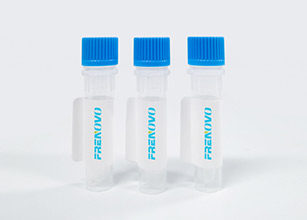Scope of application:
This food safety rapid test kit is suitable for rapid screening of clenbuterol hydrochloride in pork muscle tissue. It also has a certain reference value for rapid screening of clenbuterol hydrochloride in pig liver, lung, kidney tissue, and urine.
Detection principle:
Clenbuterol Hydrochloride rapid test strip is based on competitive colloidal gold immunochromatography technology. The detection liquid is added to the sample hole of the test strip. Clenbuterol hydrochloride in the detection liquid and antibodies on the test card form a complex. If the concentration is lower than the sensitivity value, it gradually coagulates into a visible T line; if the concentration is higher than the sensitivity value, it will not form a visible T line and will form a visible C line.
Sensitivity:
3ppb
Food safety rapid test steps
(1) Take 4g of shredded or mashed sample meat puree/de-fatting in a large centrifuge tube and cover the tube.
(2) Place the sample-containing centrifuge tube in a water bath and heat it for 10 minutes, or place the sample-containing centrifuge tube in a cup and replace it with hot water above 90°C several times within 10 minutes to allow the tissue sample to release liquid.
(3) If the released liquid is clear, the supernatant can be directly taken as the test sample. If the released liquid is turbid, the liquid can be transferred into a small centrifuge tube with a pipette, and the supernatant can be taken as the test sample after standing or centrifuging.
(4) Take out the test card and place it flat on the table. Use the dropper in the test card bag to take the test sample liquid and add 3 drops of the sample liquid to the oval hole of the test card. If there is no liquid migration in the rectangular observation window after 30 seconds, add 1 drop of the sample liquid, and judge the result within 5~10 minutes.
Result interpretation
If C line is colored, T line is not colored, and it is judged as positive;
If C line is colored, T line is visible to the naked eye, and it is judged as negative regardless of color depth;
If C line is not colored, and regardless of whether T line is colored, the food safety test kit is judged as invalid.
Rapid detection of nitrite in food salt and rapid identification of food salt and nitrite:
Take one scoop of food salt with the attached spoon and add it to the test tube. Add distilled water or pure water to the 1ml mark. Cover the lid, shake the solid part to dissolve it, and compare it with the standard color plate after 10 minutes. The value on this color plate multiplied by 10 is the content of nitrite in food salt. When the sample turns blood red and produces sediment or quickly fades to yellow, the nitrite content can be determined to be relatively high, or the sample itself is nitrite.
Liquid sample detection:
Take 1ml of clear liquid sample and add it directly to the test tube. Cover the lid, shake the reagent, and compare it with the standard color plate after 10 minutes. Find the color gradient that matches the solution color in the test tube, and the value on this color gradient is the content of nitrite in the sample calculated as NaNO2. If the content of nitrite is calculated in units of nitrogen, such as drinking water or source water, the value on the color gradient is divided by 5. If the content of nitrite is calculated in units of nitrite ion NO2, such as mineral water, bottled drinking purified water, etc., the value on the color gradient is divided by 3.28.
Testing of milky samples:
1ml of cow's milk or soy milk can be directly taken and added to the test tube. Cover the lid, shake the reagent, and compare it with the standard color plate after 10 minutes. The value on the same color gradient as the solution color in the test tube multiplied by 2 is the approximate content of nitrite in the sample.
Testing of solid or semi-solid samples:
Take 1.0g or 1.0ml of evenly ground and crushed sample and add it to the 10ml color comparison tube. Add distilled water or deionized pure water to the mark, shake it well, and take the clear liquid or the supernatant obtained by filtering or centrifuging. Add 1.0ml of it to the test tube. Cover the lid, shake the reagents, and compare with the standard color plate after 10 minutes. The value on this color plate multiplied by 10 is the content of nitrite in the sample calculated as NaNO2.
